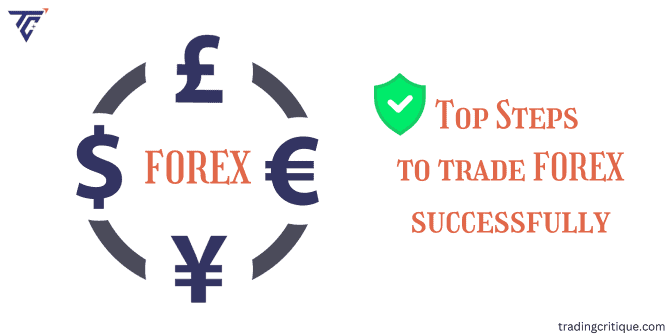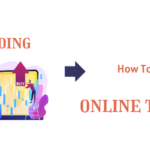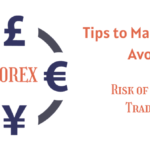What is Forex?
The International currency exchange market is called foreign exchange, or forex. With more than $7.5 trillion in trading volume every day on average, it is the largest financial market in the world. Can you imagine that?
What is Forex Trading?
Forex trading is the process of making predictions about changes in currency prices in an attempt to make money. Many currency conversions on the forex market are carried out more for practical than for-profit motives.
Still, traders can make predictions about changes in the forex market price and profit from correctly predicting these movements.
How to Trade the Foreign Exchange Market?
The Forex market is a complex worldwide system comprising brokerages and computerized units. There are three different kinds of markets with daily foreign exchange trading occurring within that network.
How to trade forex? Once you have the skills necessary to trade forex, you will see why this market is so well-liked. You’ll find that you can trade 24 hours a day and select from a wide variety of currency pairs, including majors and exotics.
Why Trade Forex?
The comparison of one currency against another currency in the trade is called foreign exchange.
For example, if you buy USD/GBP and take a “long” position, you expect the value of the US dollar to increase relative to the pound. On the other hand, deciding to ‘sell’ EUR/AUD suggests making a wager that the euro will lose value about the Australian dollar.
How to Trade the Forex Market?
Explore ‘How to forex trade for beginners’: A step-by-step guide for new traders.
Step 1: Choose a broker.
Step 2: Create an account to trade forex.
Step 3: Confirm your proof of identity.
Step 4: Add currency to your forex account.
Step 5: Examine currencies and find opportunities for trading.
Step 6: Involves measuring up your first forex trade while taking the possibility of an open position into account.
Step 7: Keep an eye on and control your situation.
How to Trade Forex Successfully?
- Assess your risk appetite in the context of effective risk management.
- Learn the fundamentals of the market before you jump in.
- Select a consistent forex broker.
- Use trading resources to expand your Forex knowledge.
- Set attainable objectives and challenge yourself to advance.
What is the Best Time to Trade Forex?
When can you trade forex? Forex trading offers the flexibility of a 24/5 forex market, allowing you to trade on your terms, no matter your location. But not every hour is the same. Even though forex is very liquid, there are periods of calm and periods of intense activity.
| Time to Trade Forex |
|---|
| New York 8 a.m. to 5 p.m. (EST) |
| Tokyo: from 4 a.m. to 7 p.m. (EST) |
| Sydney: from 3 p.m. to 12 a.m. (EST) |
| London: from 3 a.m. to 11 a.m. (EST) |
Can you day trade on forex? Yes! Buying and selling currency pairs on the same day is known as day trading in the Forex market. Although this kind of trading moves quickly and is risky, it can also be very profitable. Day traders must be able to act quickly because they usually work in shorter time frames.
- With $500, you can start trading forex, and with $1000, you can start trading futures.
- Before using real money to buy and sell assets, practice on a demo account to develop a winning strategy.
- If you want to succeed in day trading, you must learn how to manage the significant amounts of risk involved.
How to Trade Forex Successfully for Beginners
Step 1: How to Read the Forex Market:
- The foreign exchange market or forex market is open for business five days a week, 24 hours a day, in various time zones.
- Because there is no central exchange and trading happens electronically over-the-counter (OTC), the forex market is decentralized.
- The primary players in the forex market are individual traders, banks, corporations, and governments.
Step 2: Pairs of Currencies:
- In forex trading, currency pairs are purchased and sold. One base currency and one quote currency make up each currency pair.
- For example, the euro is the base currency while the USD is the quote in the EUR/USD pair.
- The exchange rate simply represents an expression of the value of one currency over another.
Step 3: Terminologies Used in Trading:
To begin trading forex, common terms to know are:
- Pips: In forex trading, a pip is the smallest unit of measurement, denoting the fourth decimal place in the majority of currency pairs. It is employed to gauge fluctuations in the currency rate.
- Lot Size: A trade’s size is referred to as its lot. Mini and micro lots are 10,000 and 1,000 units of the base currency, respectively, while standard lots are usually 100,000 units.
- Leverage: With less capital, leverage helps traders to manage bigger positions. Because it magnifies gains as well as losses, it must be used carefully.
Step 4: Mechanical and Essential Analysis:
- To trade forex profitably, you must combine technical and fundamental analysis.
- Examining news stories, economic indicators, and geopolitical variables that may affect currency values are all part of fundamental analysis.
- In contrast, technical analysis forecasts future price movements by utilizing past price data and chart patterns.
Step 5: Hazard Control:
- Managing risk is a crucial aspect of trading foreign exchange. Setting take-profit and stop-loss orders is crucial to securing profits and limiting possible losing money.
- Additionally, to protect against significant losses from a losing trade, diversify your holdings and limit the amount of money risked on any single trade to a predetermined percentage.
Step 6: Demo Account Practice Trading:
- Beginners should learn the basics of trading and practice on a demo account before risking real money.
- With a demo account, you can trade virtually in real market conditions, giving you a risk-free setting to practice and test various strategies without losing money.
Step 7: Manage Your Feelings:
- Emotions often cloud judgment and lead traders to make poor choices.
- It’s serious to restrain negative emotions like fear and greed and adhere to your successful trading strategy.
- Trading results can be substantially increased by following a disciplined strategy and keeping an even-keeled mindset for your successful trading journey.
Step 8: Creating a Trading Plan:
- Since the forex market is always changing, traders must stay current on the newest tactics, news, and trends.
- Beginners can improve their trading skills with a variety of educational resources, such as blogs, webinars, and online courses.
Forex Trading How Does it Work?
Forex trading has certain features that make it more complicated to trade, even though it does share some similarities with stock market trading.
For instance, forex traders must select currency pairs rather than just purchasing one currency and waiting for it to increase in value.
Thirty different currency pairs are exchanged each day and, these are the most popular currency pairs that contain the US dollar.
| Most Popular Currency Pairs | |
|---|---|
| USD/JPY | (Japanese yen) |
| EUR/USD | (Euro) |
| GBP/USD | (Great Britain Pound Sterling) |
| USD/CHF | (Swiss francs) |
| AUD/USD | (Australian dollar) |
| USD/CAD | (Canadian dollar) |
| NZD/USD | (New Zealand dollar) |
Trading forex, also known as foreign currency trading, is very speculative by nature. After selecting a currency pair, an investor guesses as to how much of one currency they can buy with the other
For instance, buying EUR/USD is a bet that the buyer may be in a position to acquire more Euro at a lower market price as compared to what he/she could have had in the future. This implies that increasing the value of a euro is advantageous to the said investor. The investor faces the risk of lost money if the market price declines.
How to Start Trading Forex?
The majority of forex trading is done by large entities, so becoming an individual investor is quite simple. Similar to fund or stock trading, investors can fund an account and create a profile on many broker websites.
Due to the extreme liquidity and volatility of forex trading, investors should carefully consider their purchases and the associated risks before investing.
Think about the factors influencing the market and the length of time you wish to invest your money. Keep in mind that anything can change at any time of day or night on a 24-hour exchange.
Best Broker for Forex US
The number of stock trading apps is equal to the number of forex brokers. But since forex is traded all over the world, you need to make sure the brokerage you’re thinking about takes US investors. Many don’t.
Find out which forex trading platforms are best for you by doing some research. Forex.com might be a possibility if trading foreign exchange is your main interest. Forex trading is also available on other well-known online stock trading sites like TD Ameritrade and IG.
How to trade in foreign currency? All forex trading is done over the counter, or OTC, which means that there is no physical exchange.
Instead, the market is supervised by a global network of banks and other financial institutions rather than a central exchange like the New York Stock Exchange. This is how to trade foreign currency.
In a Nutshell
- How do I get into forex trading? Make sure the forex broker you select can meet your trading needs both now and in the future by doing your research before choosing one.
- Look for a provider in a jurisdiction with strict regulations and reasonable spreads and fees.
- Examine the various kinds of trading platforms, tools for trading and analysis, leverage availability, and other aspects.
- Learn how to properly analyze currency markets and familiarize yourself with basic forex strategies before you trade.
- Before risking actual money in the market, think about experimenting and backtesting your strategy on a demo account.
Visit tradingcritique.com for the most recent information on stocks, top forex brokers list, cryptocurrencies, insightful blogs, and genuine broker reviews.
FAQ – Frequently Asked Questions
1. How Much I Can Make as a Beginner in Forex?
As a beginner in forex, if you invest $3000, you can profit on average more than $60 per day, risking no more than 1% of your account on each trade. It is possible to open an account with a smaller amount, like $500, but you should commit to building the account for a minimum of a year before taking any money out.
2. How to Trade Forex Without Losing Money?
Achieving a perfect score in a game is similar to trading forex without any losses—it’s difficult! Still, there are ways to reduce the risk.
3. What is the Best Way to Succeed in Forex Trading?
- Recognize the markets
- Create a plan and follow it
- Practice
- Predict the market’s “survival conditions”
- Know your boundaries
- Identify where to pause along the route
- Leave your feelings outside the door
- Continue steadily and slowly
4. What is the Number One Rule in Forex Trading?
It is highly advised that you stay away from trades where the profit-to-loss ratio is less than 1:2. The ideal ratio in real life is 1:3, meaning that one successful trade should equal the losses from three unsuccessful ones.
5. When Should You Not Trade Forex?
There are times when it’s best to take a back seat. Even though the Forex market is open 24 hours a day, 5 days a week, there are some circumstances in which you should avoid trading. These include illiquid market hours, high-impact news, bank holidays, and significant central bank meetings.







